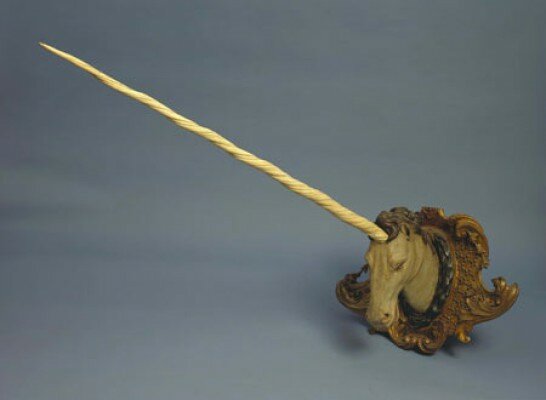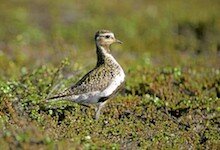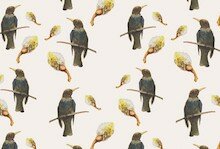Natural medicine
An interview with Anna Herman on poetry as consolation [excerpt]

Anna Herman's second volume of poems opens like this:
Digging into the thick dark, covering up – –
Maybe that’s all I know how to do.
Maybe I just can’t get by, maybe
combing my hair, getting dressed, putting on my shoes
is as hard each day as parting the Red Sea.
[…]
I’ll head to the sunset shore like Aline,
spread my wings and alight over that blue glass
and someone will write my name on the sand.
[…]
I will take off over this sullen earth –
If you can’t sit down, you fly away.
I’ll head to the sunset shore like Aline,
spread my wings and alight over that blue glass
and someone will write my name on the sand.
[…]
I will take off over this sullen earth –
If you can’t sit down, you fly away.
– ‘A solid mirror’ (tr. Adriana X. Jacobs)
Reading The book of simple remedies and conducting a conversation with the poet reveals that Herman’s persona experiences reality in two main ways: hiding from the world under bedcovers or striding along the beach in a romantic reverie. Daily routine won’t be found here. [It seems that] Anna Herman doesn’t walk down [our] streets, and doesn’t sit in [our] cafes. She’s into snow, the Sambatyon [a river that ceases to churn on the Sabbath, according to Jewish folklore], and the Middle Ages.
‘Actually in this book there are two poems that mention sitting in cafes, because they were written while I sat in one’, Herman corrects me, laughing. ‘But about the opening poem, what you say is true, and it’s not the first poem in the book by accident. I feel that these are my choices. When I’m distraught and I ask someone close to me, “What will be?” and they say, “It’ll turn out okay”, it really makes me mad. I’m simply not prepared for “okay”. I want things to be splendid. To be what I need them to be. Either […] a total withdrawal from the world, or a power walk on the beach out of happiness, a feeling that I have so much strength that I can spread my arms, they’ll become wings, and I can fly’.
The original ‘Book of simple remedies’, she explains, ‘is medieval and describes healing methods of the time, for example, the use of unicorn horns. When I learned about it, I knew I would name my second book after it. This may sound strange, but I strongly believe in simple remedies. And I believe that poetry is one of them’.
The connection the poet makes between poetry and healing is noteworthy in light of the fact that her poems tend to be filled with pain and trauma. Yet, in her eyes, her second book contains not a few amusing poems. ‘The new volume is a direct continuation of Unicorn’, she says, ‘but at the same time I think the books are very different. This one has more poems about the present, in contrast with the poems of childhood and adolescence in Unicorn. And there are also funny poems. I felt like laughing when I wrote them. It’s not that they are free of pain, but rather that they were written with a light hand’.
Q: Do your poems have a healing effect on you or on the reader?
A: The strength I’ve found in poems is from reading them. The consolation I’ve found in reading poetry over the years is my simple remedy. The poems I’ve written, mostly in Unicorn, give me the feeling that they were the ones I needed when I was 12 or 15 or 18. This is the kind of simple remedy I’m talking about.
[…]
Q: In your sonnet series ‘A lover’s wounds’ you write, ‘I’m writing a poem without armor/ and all truthful poetry poses a danger’. What is ‘truthful poetry’? Doesn’t all poetry speak the truth?
A: […] Perhaps I meant something very basic about truth. I wrote the sonnets after a line of Lea Goldberg’s: ‘how will the wounds of love bloom?’ I think that poetry blooms from wounds.
[…]
Q: In the introduction to your Hebrew translation of The journals of Sylvia Plath, you cite ‘Lady Lazarus’: ‘Dying/ Is an art, like everything else./ I do it exceptionally well’. Death is also strong presence in your poems and a way that you communicate, connect with Plath. In ‘Sleeping Beauty’ you write, ‘and even now you are wrapped in your bed with/ the knowledge that Sylvia Plath in winter, at your age,/ opened the oven and crawled into the womb’. What kind of a relationship do you have with death, is dying an art?
A: I don’t believe that [. . . ]. Most of my childhood I was very frightened of death. I was conscious of it from an early age. All throughout my childhood I was afraid to fall asleep. Death was certainly a presence in my childhood. That ‘dying is an art’ I felt only during the most confused stage of my life, if I ever had such a period. I wrote about this in Unicorn, in one of my earliest poems written when I was 19: ‘I am trying to befriend death’. I had a feeling of omnipotence that in some way I had already laughed in death’s face. This was actually during one of the strongest stages in my life. But I don’t think that I’m a person who wants to die. Not at all. The presence of death in my poems stems from fear of death. I love life. I am so not-existentialist; that is, I really believe that wonderful things can happen in life. I’m waiting for them to happen.
(At the time of this interview in 2006, poet and translator Anna Herman was 32.)








